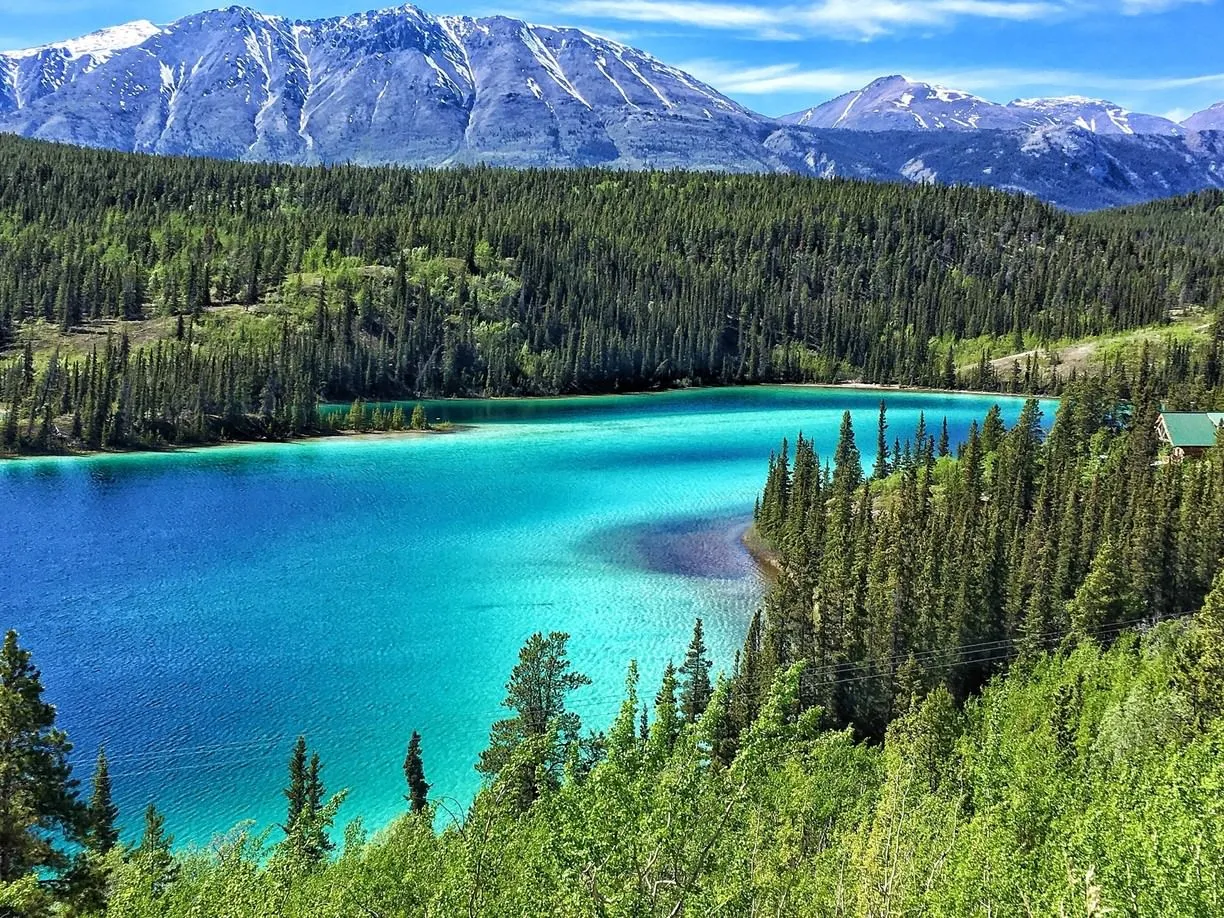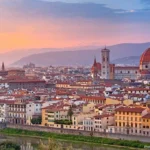
Fascinated by the Yukon? Dig into these 25 incredible facts brimming with details, from record-breaking temperatures to historical tidbits. Uncover the secrets of this wild and wonderful territory, and quench your thirst for Yukon trivia!
The Yukon Territory, officially established on June 13, 1898, holds a significant place in Canadian history due to its role in the Klondike Gold Rush. This date marks the formal recognition of Yukon as a distinct region within Canada, setting the stage for the influx of prospectors seeking their fortunes in the gold fields. The establishment of the territory brought about a period of rapid development and cultural exchange, shaping the identity of Yukon as we know it today.
Mount Logan, towering at an impressive 5,959 meters (19,551 feet), stands as a majestic symbol of the Yukon’s rugged and awe-inspiring landscape. As the highest mountain in Canada and the second-highest peak in North America, Mount Logan attracts climbers and adventurers from around the world seeking to conquer its formidable heights. Its snow-capped summit commands respect and admiration, offering a challenging yet rewarding experience for those who dare to ascend its slopes.
Dawson City, synonymous with the Klondike Gold Rush of the late 1800s, holds a special place in Yukon’s history as a bustling hub of activity and opportunity. The discovery of gold in the Klondike region transformed Dawson City into a vibrant epicenter of wealth and ambition, drawing thousands of fortune-seekers in search of their golden dreams. The town’s legacy as a pivotal player in the Gold Rush era continues to resonate through its well-preserved historic buildings and rich cultural heritage.
The Yukon River, stretching an impressive 3,185 kilometers (1,979 miles) through the heart of the territory, serves as a lifeline for both wildlife and human inhabitants. As the third-longest river in North America, the Yukon River weaves its way through diverse landscapes, offering vital resources and transportation routes for those who call its banks home. Its meandering course and powerful currents reflect the untamed beauty and rugged wilderness of the Yukon, shaping the region’s ecology and economy.
Carcross Desert, often dubbed the world’s smallest desert, presents a fascinating natural anomaly within the Yukon’s diverse terrain. Covering a mere 1 square mile, this unique sand dune landscape stands in stark contrast to the surrounding boreal forests and snow-capped mountains, earning it the title of “desert” despite its northern location. The origins of Carcross Desert remain a subject of scientific intrigue, adding to its mystique and allure as a must-see attraction for visitors exploring the Yukon’s natural wonders.
The bone-chilling winter temperatures in Yukon, plummeting to as low as -30°C (-22°F), underscore the territory’s reputation for extreme cold and harsh weather conditions. The long, dark winters in Yukon test the resilience of both wildlife and residents, requiring careful preparation and adaptation to survive the frigid climate. From frozen landscapes to shimmering ice crystals, the winter season in Yukon paints a picture of stark beauty and unforgiving challenges, shaping the rhythm of life in this rugged northern wilderness.
Kluane National Park and Reserve, home to Canada’s highest peak, Mount Logan, stands as a pristine wilderness sanctuary in the heart of the Yukon. Spanning over 22,000 square kilometers, this vast expanse of protected land showcases the breathtaking beauty of the St. Elias Mountain Range and the interconnected ecosystems that thrive within its borders. As a UNESCO World Heritage Site, Kluane National Park and Reserve serves as a beacon of conservation and stewardship, preserving the natural wonders of the Yukon for future generations to cherish and protect.
The Yukon Quest, a grueling 1,000-mile international sled dog race, captures the spirit of adventure and endurance in the northern wilderness. Each year, mushers and their teams of sled dogs embark on a challenging journey from Fairbanks, Alaska, to Whitehorse, Yukon, braving treacherous terrain and harsh weather conditions along the way. The Yukon Quest’s reputation as one of the toughest sled dog races in the world stems from its demanding course and the physical and mental fortitude required to complete the epic journey through snow-covered landscapes and icy trails.
The S.S. Klondike, a historic sternwheeler ship that once plied the waters of the Yukon River during the Gold Rush era, stands as a testament to the region’s rich maritime history. As a vital lifeline for transporting goods and passengers between communities along the river, the S.S. Klondike played a crucial role in the economic development of the Yukon during a time of great prosperity and change. Today, this iconic vessel serves as a floating museum, offering visitors a glimpse into the past and the enduring legacy of Yukon’s riverboat era.
The Dempster Highway, spanning an impressive 736 kilometers (457 miles) through some of the most remote and rugged terrain in Canada, represents a remarkable feat of engineering and ingenuity. As the only all-weather road in Canada that crosses the Arctic Circle, the Dempster Highway provides a vital link between the Yukon and the Northwest Territories, opening up access to some of the most isolated and pristine wilderness areas in the country. Traveling along the Dempster Highway offers a unique opportunity to witness the raw beauty of the northern landscape, from vast tundra expanses to rugged mountain ranges, showcasing the untamed splendor of the Yukon’s backcountry. This remote highway stands as a testament to human perseverance and exploration, inviting adventurers to embark on a journey through the heart of the northern wilderness.
The largest recorded gold nugget in Yukon, weighing over 72 ounces, symbolizes the rich mining heritage and abundance of precious metals found in the region. This impressive nugget serves as a tangible testament to the allure of gold and the enduring legacy of the Klondike Gold Rush, which drew prospectors from far and wide in search of their fortunes in the rugged Yukon wilderness.
The Yukon Wildlife Preserve, spanning 700 acres, stands as a sanctuary for northern Canadian species, offering visitors a unique opportunity to observe and learn about the region’s diverse wildlife. From majestic caribou to elusive lynx, the preserve showcases the beauty and biodiversity of Yukon’s natural ecosystems, highlighting the importance of conservation and habitat protection for future generations to appreciate and steward.
Dawson City’s iconic Sourtoe Cocktail, featuring a preserved human toe in the drink, has become a quirky and legendary tradition dating back to the 1970s. This unusual concoction, served at the Downtown Hotel, has gained international fame as a rite of passage for adventurous visitors willing to brave the bizarre and unforgettable experience of sipping a drink garnished with a genuine human digit.
The Takhini Hot Pools near Whitehorse offer a soothing retreat for locals and visitors seeking relaxation and rejuvenation in the midst of Yukon’s rugged wilderness. These natural hot springs, open year-round, provide a therapeutic oasis where guests can unwind in warm mineral waters while surrounded by snow-capped mountains and pristine boreal forests, creating a tranquil escape from the rigors of everyday life.
The Yukon Northern Lights Centre invites visitors to delve into the mesmerizing world of the Aurora Borealis, shedding light on the science and folklore behind this awe-inspiring natural phenomenon. Through immersive exhibits and captivating presentations, guests can deepen their understanding of the Northern Lights’ mystical beauty and scientific origins, offering a glimpse into the enchanting dance of light that illuminates Yukon’s night skies.
The Yukon Arts Centre, nestled in Whitehorse, serves as a vibrant cultural hub showcasing a diverse array of local and international artists through dynamic performances and engaging exhibitions. From captivating theater productions to thought-provoking art installations, the center celebrates creativity and expression, fostering a sense of community and appreciation for the arts among residents and visitors alike.
The Yukon Quest, renowned as the toughest sled dog race in the world, challenges mushers and their canine companions to navigate a grueling 1,000-mile journey through the unforgiving wilderness of Alaska and Yukon. With its rugged terrain, extreme weather conditions, and demanding course, the Yukon Quest tests the limits of endurance and teamwork, embodying the spirit of adventure and resilience that defines the northern frontier.
The Carcross Tagish First Nation, an indigenous group with a rich cultural heritage, plays a vital role in shaping the social fabric and identity of Yukon’s diverse population. With deep connections to the land and a legacy of resilience and tradition, the Carcross Tagish First Nation contributes to the cultural tapestry of the territory, preserving ancestral knowledge and fostering a sense of community and belonging for future generations.
The Yukon Transportation Museum in Whitehorse offers a fascinating glimpse into the history of transportation in the region, showcasing a diverse collection of artifacts and exhibits that highlight the evolution of travel and mobility in Yukon. From vintage dog sleds to historic planes, the museum preserves and celebrates the ingenuity and innovation of transportation pioneers who helped shape the territory’s infrastructure and connectivity over the years.
The Yukon Quest trail, winding through some of the most remote and rugged wilderness in North America, beckons adventurers and outdoor enthusiasts to embark on a journey of discovery and challenge. Spanning diverse landscapes and terrain, from snow-covered mountains to frozen rivers, the trail offers a thrilling opportunity to experience the untamed beauty and raw power of Yukon’s backcountry, forging unforgettable memories and inspiring a deep appreciation for the natural world.
The Klondike Highway, stretching approximately 530 kilometers (330 miles) between Whitehorse and Dawson City, serves as a vital lifeline connecting communities and travelers across the rugged Yukon terrain. This scenic highway winds through diverse landscapes, from boreal forests to rolling hills, offering breathtaking views and memorable experiences for those who traverse its winding path.
The Kluane Icefields in Yukon rank among the largest ice fields in the world outside of the polar regions, showcasing the stunning beauty and geological significance of these frozen landscapes. Spanning vast expanses of ice and snow, the Kluane Icefields captivate visitors with their pristine beauty and unique ecosystem, serving as a testament to the enduring power and majesty of nature in the northern wilderness.
With over 10,000 lakes dotting its landscape, Yukon emerges as a haven for fishing enthusiasts and water lovers seeking tranquility and adventure amidst its pristine waters. From crystal-clear alpine lakes to meandering rivers teeming with fish, Yukon’s aquatic playground offers endless opportunities for outdoor recreation and exploration, inviting visitors to immerse themselves in the natural beauty of the territory.
The White Pass and Yukon Route railway, a historic narrow-gauge railroad dating back to the Gold Rush era, weaves a tale of adventure and ingenuity as it winds through rugged mountain passes and scenic vistas. This iconic railway, known for its breathtaking views and rich heritage, offers passengers a glimpse into Yukon’s storied past and the pioneering spirit that shaped the region’s development and connectivity through the power of rail travel.
With a population of around 40,000 people, the Yukon Territory strikes a balance between wilderness and community, with the majority of residents residing in the vibrant capital city of Whitehorse. This close-knit population reflects the territory’s unique blend of urban amenities and wilderness adventures, where modern conveniences coexist with rugged landscapes, creating a dynamic and diverse tapestry of culture, heritage, and opportunity in the heart of Canada’s northern frontier.
Yukon FAQs: Unveiling the Secrets of Canada’s Wild Territory
Yukon, a land of sprawling wilderness, rich history, and breathtaking natural beauty, beckons the curious and adventurous. Whether you’re planning a trip or simply quenching your thirst for knowledge, here are some frequently asked questions about Yukon, answered in detail:
1. Where is Yukon and what’s it like?
Yukon is a territory in northwestern Canada, bordering Alaska (USA) to the west, the Northwest Territories to the east, and British Columbia to the south. With a population of around 42,000, it’s Canada’s smallest and most sparsely populated territory. Yukon boasts a diverse landscape, ranging from rugged mountains like the Kluane Ranges to vast boreal forests and the tundra of the North. Over one-third of the territory is protected as wilderness parks, showcasing stunning glaciers, crystal-clear lakes, and abundant wildlife.
2. What’s the weather like in Yukon?
Yukon experiences a subarctic climate with distinct seasons. Summers are short but surprisingly warm, with average highs in the mid-20s°C (70s°F) and long daylight hours, sometimes reaching up to 20 hours around the summer solstice. Winters are long and cold, with average lows dipping below -20°C (-4°F).
3. What are some interesting things to do in Yukon?
Yukon caters to outdoor enthusiasts of all levels. Hiking, biking, kayaking, canoeing, and fishing are popular activities in the summer. Winter offers opportunities for snowmobiling, cross-country skiing, ice fishing, and witnessing the awe-inspiring Northern Lights. For the culturally curious, exploring historical sites like Dawson City, a UNESCO World Heritage Site, or visiting First Nations communities to learn about their traditions offers a unique experience.
4. What’s the food scene like in Yukon?
Yukon’s cuisine reflects its multicultural heritage. First Nations dishes like caribou stew and bannock (a flatbread) are local favorites. Fresh, locally sourced ingredients are increasingly used to create innovative takes on traditional dishes. You can also find European influences like smoked salmon and baked beans, alongside modern restaurants serving international fare.
5. What’s the best time to visit Yukon?
The “best” time depends on what you want to experience. Summer (June-August) offers warm weather, long daylight hours, and ideal conditions for outdoor activities. However, summer is also the peak tourist season, with higher prices and larger crowds. Shoulder seasons (May-June & September) offer pleasant weather with fewer crowds. Winter (December-March) transforms Yukon into a winter wonderland, perfect for snow-based activities and witnessing the Aurora Borealis. However, be prepared for extremely cold temperatures.
6. How do I get to Yukon?
Whitehorse, the capital city, is the main entry point for most visitors. Air Canada offers direct flights from several Canadian cities, while Alaska Highway provides a scenic road trip option from southern Canada and the United States.
7. What’s the currency in Yukon?
The currency in Yukon is the Canadian Dollar (CAD). Many businesses accept major credit cards, but it’s always a good idea to carry some cash for smaller purchases or remote areas.
8. What about internet access and communication?
Internet access is readily available in Whitehorse and most larger towns, but it can be limited or unavailable in remote areas. Cell phone coverage can also be patchy in some regions.
9. Is Yukon a safe place to visit?
Yukon is generally a safe place to visit. However, as with any travel destination, it’s important to be aware of your surroundings and take precautions. Familiarize yourself with wildlife safety tips, especially if venturing into remote areas.
10. What are some important things to pack for a trip to Yukon?
Packing for Yukon depends on the season you’re visiting. In summer, pack layers of clothing for the varying temperatures, comfortable hiking shoes, insect repellent, and sunscreen. Winter requires robust cold-weather gear, including a warm jacket, snow pants, hat, gloves, and sturdy winter boots. This is just a glimpse into the vast and captivating world of Yukon. For further exploration, consider visiting the official travel website (https://www.travelyukon.com/pages/winteradventures/) or researching specific activities and destinations that pique your interest.








